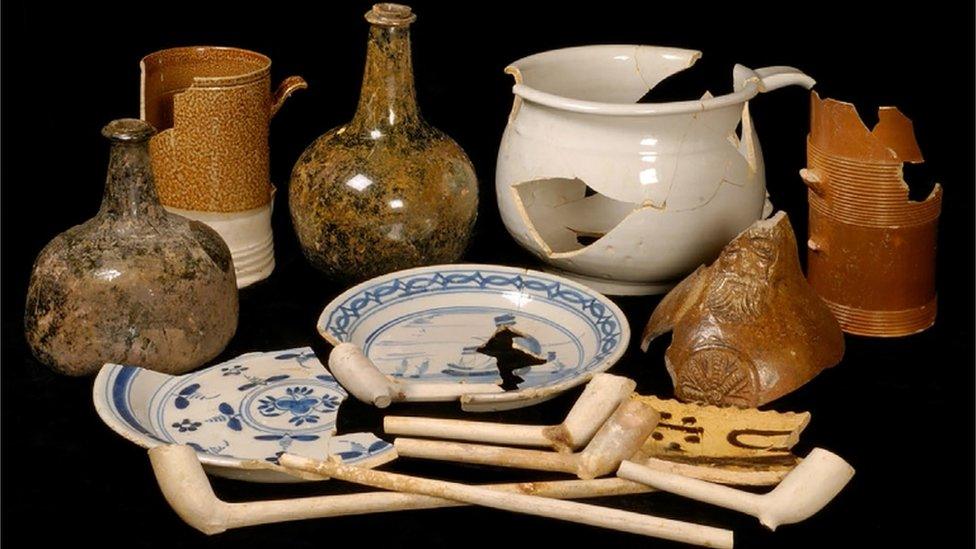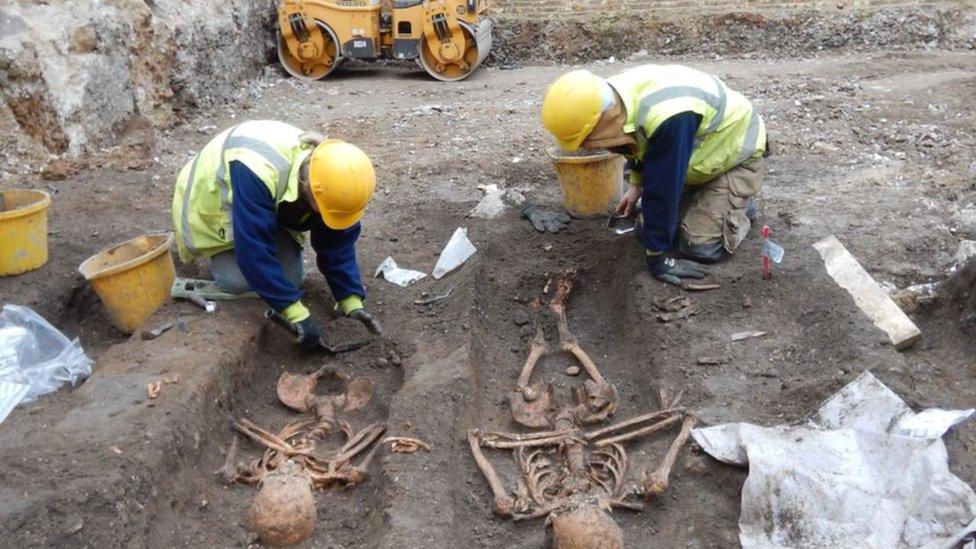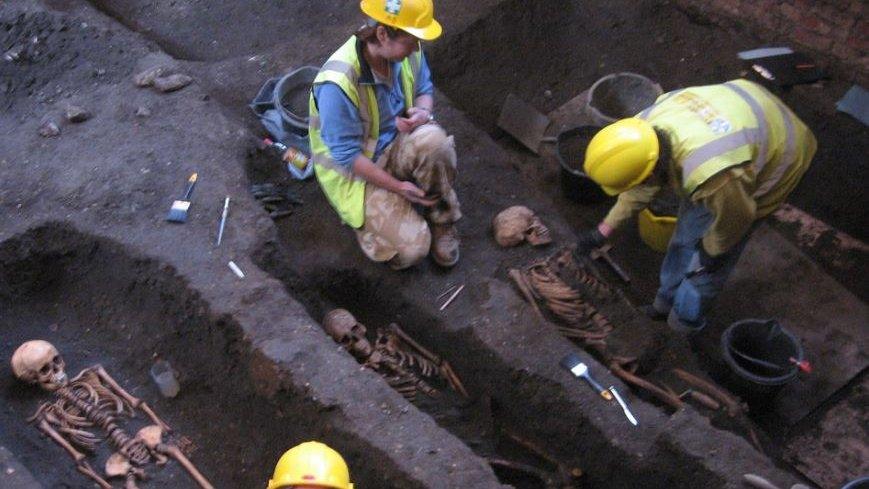Cambridge relics of '18th Century Starbucks' found
- Published

Clay pipes, drinking vessels and serving dishes were among the relics found by archaeologists
Artefacts from an 18th Century coffee shop have been found in a disused cellar at the University of Cambridge.
Clapham's operated in the mid-to-late 1700s on a site now owned by St John's College, and the discovery of more than 500 relics has shed light on it.
Craig Cessford, of the Cambridge Archaeological Unit, called it an "18th Century Starbucks" but admitted it was more like an inn by modern standards.
The 500 artefacts include drinking vessels for tea, coffee and chocolate.
Also found were serving dishes, clay pipes, animal and fish bones and 38 teapots.
Researchers said customers would have also drunk ale and wine and eaten food ranging from pastry-based snacks to substantial meals involving meat and seafood.
The discovery of 18 jelly glasses and a quantity of feet bones from immature cattle, led researchers to conclude that calf's foot jelly, a popular dish of that era, might well have been a house speciality.
'Genteel end of spectrum'
Mr Cessford said that by modern standards, Clapham's was perhaps more like an inn than a coffee shop.
"This is the first time that we have been able to study one in such depth," he said.
"It seems that coffeehouses weren't completely different establishments as they are now - they were perhaps at the genteel end of a spectrum that ran from alehouse to coffeehouse."
Coffee drinking first came to Britain in the 16th Century and by the mid-18th Century there were thousands of coffeehouses, which acted as gathering places and social hubs.
Clapham's was owned by a couple - William and Jane Clapham - who ran it from the 1740s until the 1770s.
Researchers believe that the cellar was filled with items towards the end of the 1770s, when the widowed Mrs Clapham retired.
- Published21 March 2017

- Published25 January 2017

- Published30 May 2016
